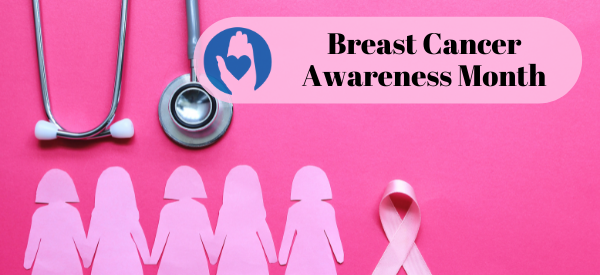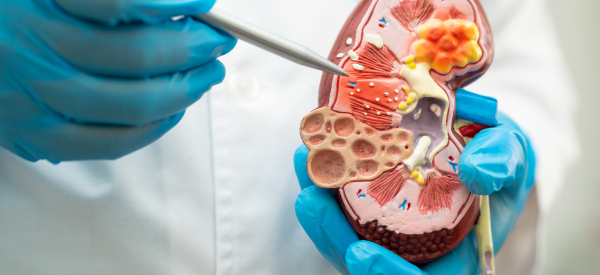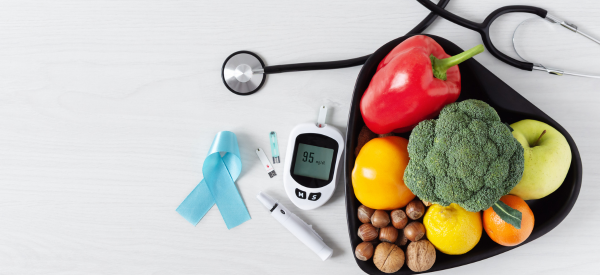Breast Cancer Awareness Month takes place during the month of October every year. It is an annual campaign to raise awareness about the impact of breast cancer. Through the spread of awareness then early detection will more likely happen as well as an intentional pooling of resources to fight breast cancer. Ultimately, this is a month dedicated to help uplift women in need.
Stay On Top Of Your Health!
The past year saw a setback in screenings and early detection, so the National Breast Cancer Foundation, Inc. (NBCF) is rising to the challenge! Rise with them!
When breast cancer is detected early, the 5-year relative survival rate is 99%. Early detection methods are as follows:
- Monthly breast self-exams
- Scheduling regular clinical breast exams
- Scheduling regular mammograms
Things To Look Out For
Monthly breast self-exams consist of noticing a change in how the breast or nipple looks or feels, whether this be tenderness, a change in texture, or a lump in the breast. Another sign can be a change in the appearance of the nipple or breast due to unexplained change in size, dimpling, swelling, shrinkage, recent asymmetry, or skin discoloration. A final indication when performing a breast self-exam is if you notice any nipple discharge, particularly, clear or bloody discharge. If you notice any of the previously mentioned symptoms, then please do not hesitate to tell your healthcare provider so that the problem can be addressed. While self-exams are important, they are not the final say and not all symptoms necessarily mean there is cancer present.
How To Perform A Self-Exam
A breast self-exam should be performed in 3 ways:
- In the shower with the pads of your 3 middle fingers. Check the entire breast and armpit area by pressing down with light, medium, and firm pressure. Check for any lumps, thickening, hardened knots, or any other changes.
- In front of a mirror inspect your breasts with your arms at your sides and then with your arms raised overhead. Look for changes in contour or swelling and dimpling. Then rest your palms on your hips and press in order to flex your chest muscles. Again, look for any changes.
- While lying down place a pillow under your right shoulder and place your right arm behind your head. Use the fingers on your left hand to pat your right breast from breast to armpit, using different pressures. Check the nipple for discharge by squeezing. Repeat these steps on the left breast.
Warning Signs
Some things to warn raising an alarm over are breast pain, and breast cysts. Breast pain – any discomfort, tenderness, or pain the breast or underarm region – is not usually a symptom of breast cancer. Any reason for a change in hormone level is likely the cause of breast pain, from puberty, to pregnancy, to menopause. Fibrocystic breast tissue or certain medications can cause breast pain as well. If breast pain is accompanied with breast cancer indicating symptoms, then talk to your doctor. A breast cyst may feel like a lump, but it is filled with harmless fluid rather than a cancerous cells. Cysts are common in premenopausal women and can cause pain in the area.
Clinical Exams
Besides self-exams make sure to schedule clinical breast exams and mammograms. Clinical breast exams are when a professional conducts an exam similar to the self-exam. A mammogram is an x-ray that allows a qualified specialist to examine the breast tissue for any suspicious areas. The breast is exposed to a small dose of ionizing radiation that produces an image of the breast tissue. Mammograms often show breast cancer symptoms before they can be felt.
Help Us Support The National Breast Cancer Foundation
Besides spreading the word of the ways in which women can detect breast cancer, it is important also to donate and contribute to the continued efforts of the National Breast Cancer Foundation. Every dollar matters. By donating to the National Breast Cancer Foundation, you are funding a mammogram, supporting education, or outreach to women in underserved communities. Visit the fundraise website associated with the NBCF to donate either one time or to set up a recurring donation. There is even the transparent option of selecting where your gift goes. Make the month of October count, make your contribution to the fight against breast cancer.




